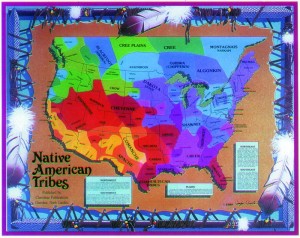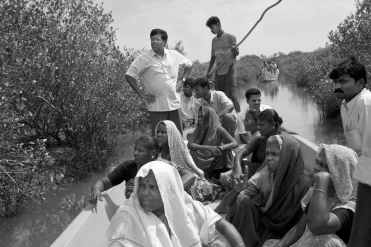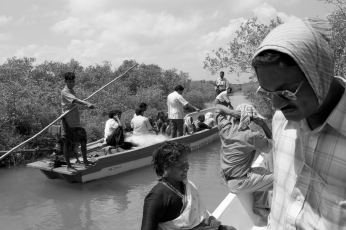Home » coping with loss and grief
Category Archives: coping with loss and grief
*** The Little Carpet Boy *** World Day against Child Labor ***
The true story of a little hero
Which country?
Which name?
Recap !
http://www.theatlantic.com/infocus/2012/06/world-day-against-child-labor/100317/
Native Americans : respect and tolerance and citizenship
https://learningapps.org/view5385349
Portrait of White Cloud
WHITE CLOUD IS A NATIVE AMERICAN.
HE IS A YOUNG MAN.
HE IS rather GOOD-LOOKING.
HE IS WEARING A HEADBAND, A NECKLACE AND FEATHERS.
WHITE CLOUD IS THE CHIEF OF THE IOWA TRIBE . George Catlin is a specialist of Native American painting.
subduction earthquake in Japan ?? tsunami [???] – under construction 11th March 2011 piece of news
Two survivors found in quake-hit Japan city Ishinomaki
 The pair survived on yoghurt and other food from the refrigerator
The pair survived on yoghurt and other food from the refrigeratorAn 80-year-old woman and a 16-year-old boy have been plucked from the rubble of a house demolished by the enormous quake which hit Japan nine days ago.
Sumi Abe and Jin Abe – said to be her grandson – “were found under debris”, said a police spokesman in Ishinomaki city, Miyagi prefecture, according to AFP news agency.
The two were in the kitchen when the quake hit on 11 March, a doctor said.
They survived as they were able to get yoghurt and other food from the fridge.
The grandson eventually managed to reach the roof of the house where he flagged down a rescue helicopter, reported Japan’s NHK news service.
The two are now being treated in hospital in Ishinomaki.
“Their temperatures were quite low but they were conscious,” the police spokesman said.
He said details of their condition were not immediately available, though a rescuer was quoted as saying the boy was found shivering and with no feeling in one leg.
Miyagi was the worst-hit in the double disaster of the quake and tsunami of 11 March, with police now saying they fear 15,000 lives could have been lost in that prefecture alone.
On Saturday the military announced a man had been found alive in rubble, but it later turned out that he had been in an evacuation centre and had tried to return to his home.
http://www.guardian.co.uk/world/video/2011/mar/20/japan-survivors-found-after-nine-days
Une forêt pour se protéger des tsunamis
Environnement
«Nous avons protégé la forêt et elle nous a protégés.» Des villageois pauvres du sud de l’Inde racontent comment un projet de conservation de la nature les a sauvés du tsunami et sortis de l’extrême pauvreté.
Patrick Alleyn (texte et photos), Dossier Environnement, International
Tamil Nadu, Inde — Nous traversons en chaloupe l’immense forêt marécageuse de Pichavaram, dans le sud de l’Inde. On s’y faufile à travers des canaux, guidés par Nagamuthu, un jeune membre de la tribu Irula. Pichavaram est une mangrove, c’est-à-dire une forêt d’arbres poussant dans l’eau salée et la boue, au bord d’un océan tropical. Dressés, tels des araignées, sur leurs dizaines de racines crochues leur servant de tronc, ils valsent au gré de la houle, réduisant ainsi jusqu’à 90% de l’énergie des vagues. Dans les régions tropicales soumises aux cyclones et ouragans, la nature a heureusement créé cet efficace système de défense des rives.
«Le jour du tsunami, les habitants des villages de Pichavaram ont aperçu trois vagues gigantesques au-dessus de la mangrove, raconte Nagamuthu. Ils ont eu le temps de s’enfuir, car les arbres ont ralenti la violence des vagues. La marée géante a emporté les bateaux, mais sans détruire les maisons. «Un village voisin, situé à la même distance de la mer, mais non protégé par la forêt, a, lui, été dévasté», fait remarquer le pêcheur qui dirige notre barque.
Le tsunami du 26 décembre 2004 a été l’une des pires catastrophes naturelles de l’histoire. L’immense raz-de-marée, provoqué par un tremblement de terre dans l’océan, a fait 280 000 morts dans plusieurs pays d’Asie. «Mais à Pichavaram, nous avons protégé la forêt et elle nous a protégés», conclut Nagamuthu, non sans fierté. Et non sans raison.
Gardiens de la forêt
 Nagamuthu coordonne depuis 1996 un vaste projet de sauvetage des arbres de la mangrove de Pichavaram. Il était à peine âgé de 17 ans quand des biologistes marins de la Fondation Swaminathan, un organisme scientifique indien, ont débarqué dans son village à la recherche d’un meneur. Ils voulaient mobiliser les villageois pour enrayer la dégradation de la forêt après les coupes «sélectives» d’arbres, autorisées par le gouvernement dans les années 1970.
Nagamuthu coordonne depuis 1996 un vaste projet de sauvetage des arbres de la mangrove de Pichavaram. Il était à peine âgé de 17 ans quand des biologistes marins de la Fondation Swaminathan, un organisme scientifique indien, ont débarqué dans son village à la recherche d’un meneur. Ils voulaient mobiliser les villageois pour enrayer la dégradation de la forêt après les coupes «sélectives» d’arbres, autorisées par le gouvernement dans les années 1970.
«Nagamuthu était le seul habitant du village sachant lire et écrire. Nous voulions transformer les habitants pauvres de la région en gardiens de la forêt, en leur démontrant que son reboisement allait améliorer leurs revenus», expose Selvam, le directeur de ce projet à la Fondation Swaminathan.
«Les gens ici sont très pauvres. Pour combler leurs besoins de base, ils coupaient les arbres ou faisaient brouter sans contrôle leurs animaux autour de la mangrove, des pratiques néfastes pour son écosystème», poursuit Selvam. Avec un financement de l’Agence canadienne de développement international (ACDI) et du Centre de recherche en développement international (CRDI), deux organismes du gouvernement canadien, les scientifiques indiens ont démarré le chantier environnemental à Pichavaram.
Les villageois ont planté des arbres et, pour les alimenter d’eau fraîche, creusé des canaux. «Des pans entiers de la mangrove ont repris vie. Sous les arbres, les crevettes, les crabes et les poissons se sont multipliés. La pêche est devenue abondante», se rappelle le père de Nagamuthu.
Pour protéger l’environnement, les scientifiques croyaient qu’il fallait d’abord combattre la pauvreté dans ces villages isolés. Ainsi, les villageois cesseraient les activités nuisibles pour la forêt, mais aussi se mobiliseraient contre tout projet du gouvernement ou de riches investisseurs pouvant la menacer.
La Fondation a donc construit une école. «On s’est aussi battu devant les tribunaux pour faire reconnaître aux membres de la tribu Irula leurs droits comme population indigène discriminée en Inde. Ainsi, des places devaient leur être réservées dans les collèges», rapporte le biologiste.
Et le jeune Nagamuthu d’enchaîner: «Aujourd’hui, les gens de mon village conseillent le ministère des Forêts, et nous avons reçu le mandat de patrouiller la mangrove pour dénoncer toute coupe illégale.»
Le modèle de Pichavaram — gestion de l’environnement par les communautés pauvres elles-mêmes — a ensuite été reproduit pour la protection d’autres mangroves en Inde. C’est aussi un modèle promu de plus en plus dans le monde, en particulier par les Nations unies, pour protéger les écosystèmes en péril — forêts, rivières, terres agricoles… Car, les pauvres sont toujours les premières victimes de la destruction de l’environnement.
«Quand j’étais enfant, les hommes du village ne portaient que des caleçons qu’ils achetaient usagés au marché!», se souvient Nagamuthu. À 8 ans, je devais conduire les chèvres au champ. Je voyais les enfants d’autres villages se rendre à l’école. De moi-même, j’ai décidé de m’y inscrire. Mais, à 13 ans, j’ai dû retourner dans la mangrove pour pêcher. Sans filet ni bateau, j’étais expert pour attraper les crabes à mains nues!» rigole-t-il. Nagamuthu poursuit maintenant des études par correspondance en sociologie.
Destruction d’une protection naturelle
L’impact du tsunami de 2004 aurait été bien moindre si les humains n’avaient pas détruit les mangroves, estiment les spécialistes du Programme des Nations unies pour l’environnement (PNUE).
En effet, plus du tiers de ces écosystèmes côtiers a disparu depuis 20 ans, pour céder la place à des hôtels, des routes ou des bassins d’élevage de crevettes. Souvent dans ces «fermes» à crevettes, les riches investisseurs abandonnent les installations après quelques années à peine, une fois la terre contaminée. Jetés au chômage, les habitants pauvres se retrouvent sans aucune ressource dans un champ de boue et de sel.
Le soir tombe. Nagamuthu nous presse de rentrer, car les filets des petits pêcheurs se dresseront bientôt sur le parcours de notre barque. «Le tsunami a créé auprès des gouvernements un intérêt nouveau pour les mangroves, constate le scientifique Selvam. Mais, je crains que cet intérêt ne s’estompe à mesure que le tsunami s’effacera des mémoires.»
http://www.lemonde.fr/week-end/portfolio/2011/03/18/tsunami-des-images-pour-le-japon_1494543_1477893.html
http://www.bbc.co.uk/news/world-asia-pacific-12743417
Radiation fears after Japan blast
By Richard Warry BBC News
The Japanese authorities say radiation levels from the Fukushima Daiichi nuclear plant have started to climb to potentially harmful levels.
Residents living within 30km (18 miles) of the plant have been advised to leave the area, or to stay indoors, and try to make their homes airtight.
Experts have stressed that swift action should be able to minimise any impact on human health.
What are the immediate health effects of exposure to radiation?
Exposure to moderate levels of radiation – above one gray – can result in radiation sickness, which produces a range of symptoms.
Nausea and vomiting often begin within hours of exposure, followed by diarrhoea, headaches and fever.
After the first round of symptoms, there may be a brief period with no apparent illness, but this may be followed within weeks by new, more serious symptoms.
At higher levels of radiation, all of these symptoms may be immediately apparent, along with widespread – and potentially fatal – damage to internal organs.
Exposure to a radiation dose of four gray will typically kill about half of all healthy adults.
For comparison, radiation therapy for cancer typically involves several doses of between one and seven gray at a time – but these doses are highly controlled, and usually specifically targeted at small areas of the body.
| Radiation dose | |
|---|---|
| Source: World Nuclear Association | |
| 2 mSv/yr (millisieverts per year) | Typical background radiation experienced by everyone (average 1.5 mSv in Australia, 3 mSv in North America) |
| 9 mSv/yr | Exposure by airline crew flying New York-Tokyo polar route |
| 20 mSv/yr | Current limit (averaged) for nuclear industry employees |
| 50 mSv/yr | Former routine limit for nuclear industry employees. It is also the dose rate which arises from natural background levels in several places in Iran, India and Europe |
| 100 mSv/yr | Lowest level at which any increase in cancer is clearly evident. |
| 350 mSv/lifetime | Criterion for relocating people after Chernobyl accident |
| 1,000 mSv single dose | Causes (temporary) radiation sickness such as nausea and decreased white blood cell count, but not death. Above this, severity of illness increases with dose |
| 5,000 mSv single dose | Would kill about half those receiving it within a month |
How is radiation sickness treated?
The first thing to do is to try to minimise further contamination by removing clothes and shoes, and gently washing the skin with soap and water.
Drugs are available that increase white blood-cell production to counter any damage that may have occurred to the bone marrow, and to reduce the risk of further infections due to immune-system damage.
There are also specific drugs that can help to reduce the damage to internal organs caused by radioactive particles.
How does radiation have an impact on health?
Radiation and cancer
- Most experts agree even small doses of ionising radiation – as low as 100 millisieverts – can increase the risk of cancer, but by a very small amount.
- In general, the risk of cancer increases as the dose of radiation increases. Exposure to one sievert of radiation is estimated to increase the lifetime risk of fatal cancer by around 5%.
- The thyroid gland and bone marrow are particularly sensitive to ionising radiation.
- Leukemia, a type of cancer that arises in the bone marrow, is the most common radiation-induced cancer. Leukemias may appear as early as a few years after radiation exposure.
- Other cancer can also result from exposure to radiation, but may not develop for at least a decade. These include cancers of the lung, skin, thyroid, breast and stomach.
What are the most likely long-term health effects?
Cancer is the biggest long-term risk.
[…]
[…]
The biggest risk was that radioactive iodine could get into their system, raising the risk of thyroid cancer.
To counter that risk, people – in particular children – could be given tablets containing stable iodine which would prevent the body absorbing the radioactive version.
The Japanese already have a lot of iodine in their natural diet, so that should help too.
How does Fukushima compare to Chernobyl?
Professor Gerry Thomas, who has studied the aftermath of the Chernobyl disaster, said: “It is very unlikely that this will turn into anything that resembles Chernobyl.
“In Chernobyl you had a steam explosion which exposed the reactor core, which meant you had a lot of radiation shooting up into the atmosphere.”
Prof Thomas said although the Chernobyl disaster had led to a rise in thyroid cancer cases, the only people affected were those living in the immediate area of the explosion and who were young at the time.
B1- B2 The survival of Saint Paul’s Cathedral during the Blitz
How did St Paul’s survive the Blitz?

There was an unofficial lull in the Blitz attacks on London, for Christmas in 1940. But by 29 December, the German bomber planes had returned with renewed vigour. St Paul’s Cathedral famously survived, but how?
It became known as the Second Great Fire of London – the night 70 years ago that devastating air raids turned the capital into a conflagration.
29 December 1940

- London’s 114th night of the Blitz
- First bombs dropped at 1815 GMT, all-clear given just after midnight
- Bombers gave up due to fog in the Channel
It had been a Christmas underground for many people, who slept in Underground stations or festively-decorated air raid shelters. For two nights, the bomber planes had not come, and the anti-aircraft guns remained silent.
That peculiar silence had already been broken as dusk fell on 29 December. The enemy aircraft had returned, dropping incendiary devices and parachute mines in many tens of thousands. Their target? The City of London.
By 1830 GMT on that cold Sunday evening, the Square Mile was in flames. Banks, offices, churches and homes were under threat, in the same streets burnt to a cinder in 1666. A US war reporter based in the city cabled his office: “The second Great Fire of London has begun.”
Prime Minister Winston Churchill sent word that St Paul’s Cathedral should be protected at all costs – it would boost morale to save Christopher Wren’s masterpiece.
But there was a hitch – a major one. Water was in short supply. The mains were being bombed, and although hoses could be filled from the nearby Thames, it was at an unusually low ebb – and unexploded bombs lay in the mud.
Nor was that the only threat to life and limb. Bombs, embers and debris rained down on the streets as they raced to battle the flames.
Christmas in the Blitz

- Councils ran best-decorated shelter contests
- Demand high for very short Christmas trees, to fit inside cramped and low-roofed shelters
- Food was heavily rationed
- Gift-giving discouraged, and people urged to give to the war effort instead
Fireman Sam Chauveau was on duty that night. “By the time we finished tackling the fires on the roof of the [Stock] Exchange, the sky, which was ebony black when we first got up there, was now changing to a yellowy orange colour. It looked like there was an enormous circle of fire, including St Paul’s churchyard.”
Bombs rained down on the cathedral. Volunteer firewatchers patrolled its myriad corridors, armed with sandbags and water pumps to douse the flames.
At about 2100 GMT, an incendiary device lodged on the roof, and the burning mercury inside began to melt the lead of the iconic dome. But luck was on the side of the firewatchers. The bomb dislodged, fell to the floor of the stone gallery, and was smothered with a sandbag.
St Paul’s was saved.
But many more buildings were lost. Tram lines and water mains were destroyed, and the streets strewn with rubble. A dozen firemen died that night, and 162 civilians also perished. Those who survived firefighting duties suffered burns, eye problems and smoke inhalation.
The story goes that Air Marshall Arthur “Bomber” Harris, surveying the damage, remarked, “Well, they’re sowing the wind.” It was under his lead that RAF Bomber Command wreaked firestorms upon German cities. Before a 1,000-plane raid on Cologne, he told the newsreel cameras: “Now they are going to reap the whirlwind.”
Of Men and Gods
Monk tragedy Of Men and Gods proves surprise hit
By Emma Jones Entertainment reporter, BBC News
 Of Gods and Men is true story that is moving audiences worldwide
Of Gods and Men is true story that is moving audiences worldwideNine monks go about the simple rhythms of their life, in the certain knowledge that they face an imminent death.
Hardly a movie pitch which would have predicted success but Xavier Beauvois’s Of Gods and Men was not only runner up at this year’s Cannes Film Festival; it ‘s now the French Oscar entry – as well as taking more than 8m euro at the French box office.
Part of its shocking appeal is that it’s based on a real story. In 1996, seven French Cistercian monks were kidnapped and then killed at Tibhirine in Algeria, amidst rising religious and factional violence. Their murderers were never found.
“When it happened, as a nation, France was shocked,” says the film’s producer Etienne Comar.
“Ten years later in 2006, the same questions resurfaced. Why did it happen? Why did they die? I decided, as a movie, that rather than portray their death, it was more interesting to show them living. There is no answer to their deaths.”
“Start Quote
We can be absolutely sure that whoever kidnapped them, they did so for political reasons, not for their faith”
End Quote Director Etienne Comar
In the movie version, the group of French Brothers live a simple life dispensing medicine and comfort to their poor Muslim neighbours. As the countryside is terrorised by armed Islamic fundamentalists, there is an order for all foreigners to leave the country.
Do the monks leave, or do stay to protect their flock, knowing that they are an inevitable target?
“It is a very current film,” comments Comar. “It’s interesting to look at this atrocity as it happened before 9/11 – all the signs of what was to come were there.
“When I re-read again the last testimony of the monks’ leader, Brother Christian, he was very aware of the co-habitation of Muslim and Christian neighbours. He seemed to have a sense that it was going to become a talking point.
“Now it is an important issue wherever in the world you live – the USA, France, the UK, the Middle East. I want this film to ask, ‘what is the next step?’ How can we live in peace with each other? What dialogue should we have?”
Ironically, the movie was filmed in Morocco, in a monastery south of Fez, which in the 1960s was used by a Benedictine order as a meeting point between Christians and Muslims.
 The monks carry on helping the Algerian community despite impending doom
The monks carry on helping the Algerian community despite impending doomIn the film, the monks and their neighbours co-exist in enviable friendship and harmony.
“We can be absolutely sure that whoever kidnapped them, they did so for political reasons, not for their faith,” adds Comar. “The problem is never the faith, it is always the politics behind the faith.”
Director Xavier Beauvois and his cast were sent to live in an actual monastery to prepare for the difference in the rhythm of monastic life.
“I also asked them to sing together,” said their producer. “Some of them had never done it before, and you would be surprised. It created a community, so by the time we actually came to shoot the film, there was a real sense of brotherhood.”
Viewers see the monks going about their daily business: praying, singing, healing the sick, cooking in the most unhurried, un-modern fashion. Yet hanging over them is a sense of sickening tension as events reach their conclusion.
Some of the scenes – where the men share a supper as Tchaikovsky’s Swan Lake plays in the background, or as the community sing to drown out the threatening whir of military helicopters, are heartbreakingly beautiful.
“I hope people will respond to it as a very universal film,” muses Comar.
“The question, whether to stay or to leave a situation, is one everyone can relate to. Every one of these monks made a personal decision to stay, and it was very courageous. I don’t know if I could have done the same. Yet they say, ‘there is no better proof of love than to die for people.'”
 The one surviving monk saw the film and says it ‘brought him peace’
The one surviving monk saw the film and says it ‘brought him peace’As well as the critics, Of Gods and Men has found praise with both the Bishops Conference of France and the French Council of Muslim Faith. But the most important critic for the film-makers must have been one of the survivors of the tragedy.
“Two of the brothers escaped being kidnapped, and one of them, Brother Jean-Pierre, is still alive.
“He is an old man of 87 now, and was unable to come to the cinema to see the film. But we sent him a DVD, and we recently received a letter from him.
“He said he liked it a lot – he could see the community of the brothers once more. He said it gave him peace to see them again.”
Of Gods and Men is released in the UK on 3 December.




